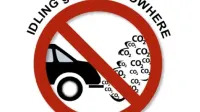Analyst: Sales of micro-hybrids to eclipse 34 million worldwide by 2015

Lux’s report states that required improvements in fuel economy, coupled with the low cost of implementing stop-start technology, will drive micro-hybrids towards dominance. Simple micro-hybrid systems, though only capable of boosting fuel economy by two to five percent, can cost an automaker no more than $300 to install on each model. More advanced stop-start setups ring in at around $1,500, but provide a healthy 10 to 15 percent hike in efficiency (a National Research Council study earlier this year pegged the cost for stop-start at $885). The reports predicts that Europe, Japan and China will witness tremendous growth in micro-hybrid sales but, as Grose outlines below, the outlook in the U.S. is decidedly different:
The U.S. has invested a lot of money in subsidies originally for hybrid vehicles and now for grid-connected vehicles. The Obama Administration has spent a lot of money subsidizing battery manufacturers, and bringing battery manufacturing to the U.S. I’m sure micro-hybrids seem like a threat.I think all the automakers are going to start bringing micro-hybrids to the U.S. starting in a couple years, and ramp up after that. As carbon targets start getting closer, there’s going to be a lot of push on industry to get those cars out. It’s something they know how to do. They just have to reconfigure it for the American market, with relatively minor tweaks.
[Source: Hybrid Cars]




